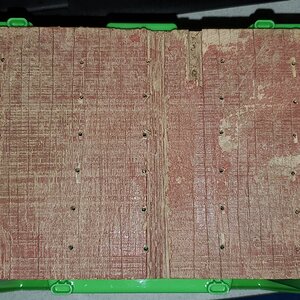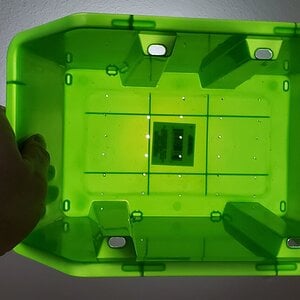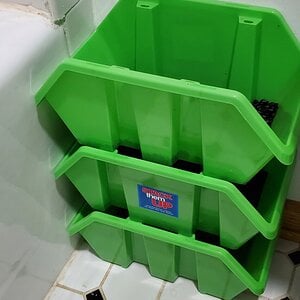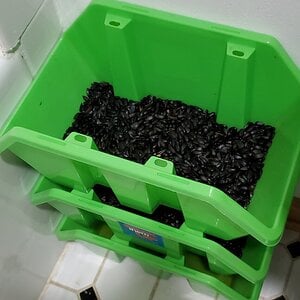Have you tried Winter Wheat yet? - I haven't tried barley, but out of the available choice of Wheat, Rye and Oats, the Wheat has worked best for me so far.
I tried to grow some wheat fodder, but the seed was left over from last year. It had a very poor germination rate and was full of mold. So I went and bought some barley seed a few weeks ago, but that seed is not germinating well either. The barley seed also has some mold issues, but not as much as the wheat.
I talked to the feed mill and they only state they sell "feed" quality grain and maybe I need to get "seed" quality grain for better germination and growth. Evidently, "seed" quality grain is for planting and would be fresher, have better germination, and free from mold. The "feed" quality grain they sell just comes from a farmer's bin, and there is no guarantee that it is this year's harvest, or a previous year's harvest. That's too bad. Last year the barley seed I got from them was just great.
I am experimenting with my fodder growing system. Since I have poor germination seeds this year, I am finding I also have a mold issue. I suspect that since fewer seeds are germinating and growing, they just sit there in the dish bin and don't really dry out as well as when the plants were growing well and drinking up the water. In response, I have cut my twice a day watering down to once a day. That gives the seeds more time to dry out and retard the mold growth. So far, I am seeing better results in terms of less mold. The germination rate is just not there with this batch of seeds and unless I get better growth, I may have to punt on this batch of seeds.
 I thought I had this growing fodder stuff down to a science. Last year I could not fail no matter what I did. This year, however, the seed quality I am working with is not very good, and I am back to treating the process more as trial and error. I have learned that the quality of the seed is perhaps the most important variable in growing fodder.
I thought I had this growing fodder stuff down to a science. Last year I could not fail no matter what I did. This year, however, the seed quality I am working with is not very good, and I am back to treating the process more as trial and error. I have learned that the quality of the seed is perhaps the most important variable in growing fodder.Unfortunately for me, I really don't know how to judge a good, viable, grain seed from a poor quality seed. It takes me about 1 week of growing fodder to see if the seeds will be any good. Oh well, at least chickens will eat feed seed as well as anything. So, it's not wasted.







 I'll say this because I didn't see it mentioned but different fodder seeds need soaked for different amounts of time.
I'll say this because I didn't see it mentioned but different fodder seeds need soaked for different amounts of time.

